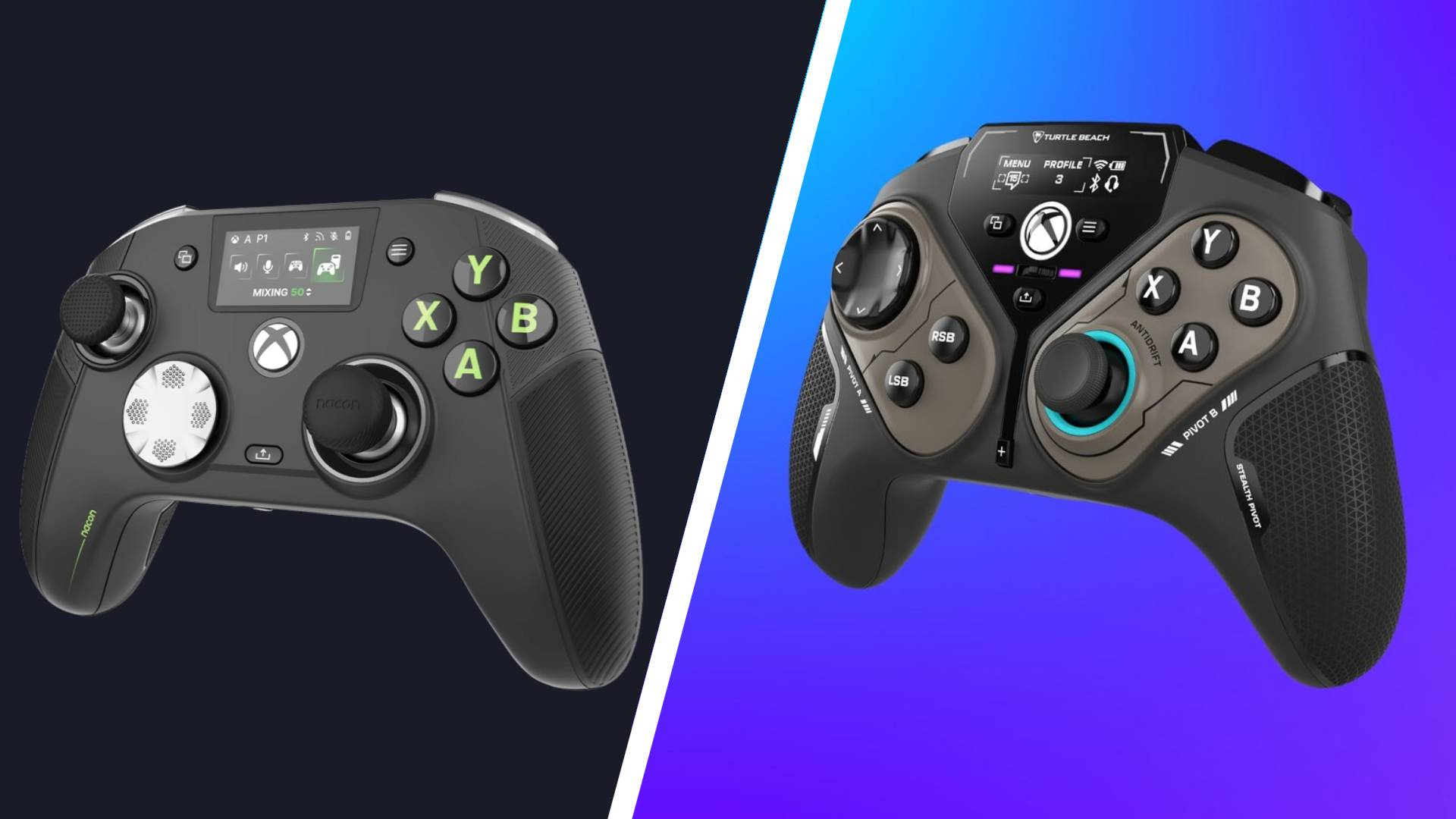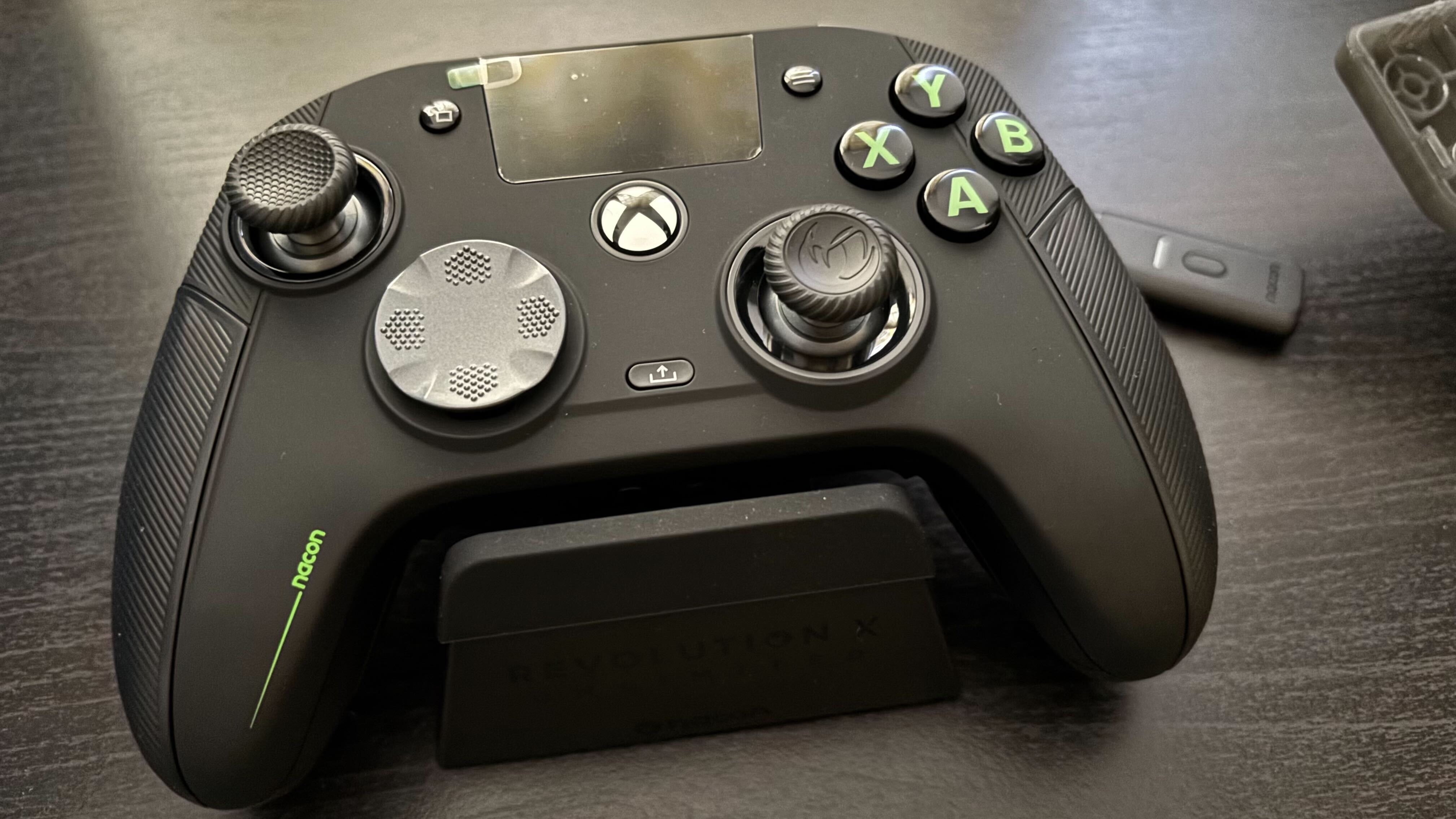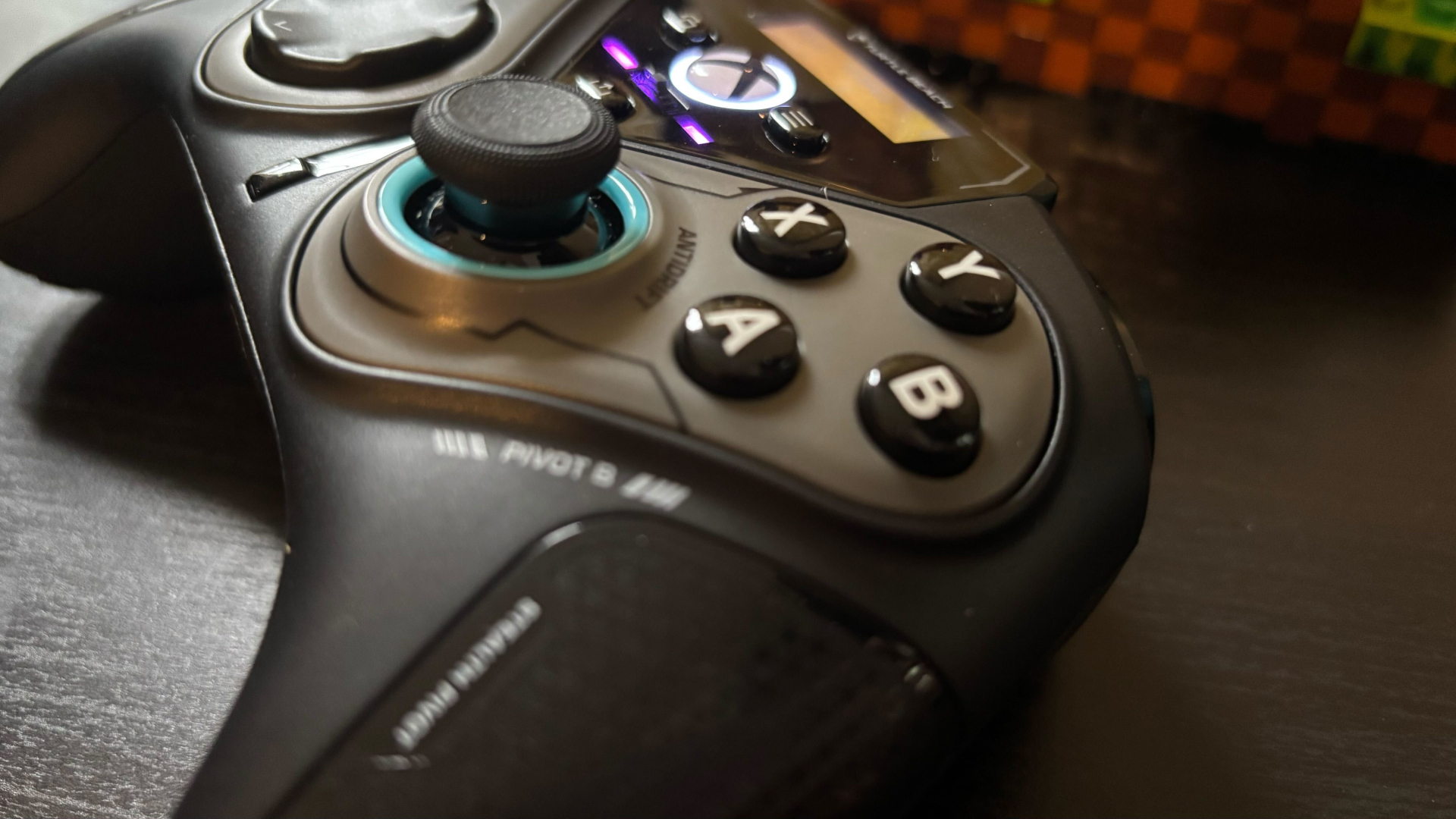
The Nacon Revolution X Unlimited vs Turtle Beach Stealth Pivot comparison might be an odd matchup in the realm of the best Xbox controllers at first glance, but the two share more similarities than simply having handy built-in displays.
The third-party controller market is better than it’s ever been. Gone are the days of having to borrow your sibling’s MadCatz gamepad for split-screen co-op in Halo 2. These days, manufacturers like 8BitDo, GameSir, and indeed Nacon and Turtle Beach are providing affordable, forward-thinking controllers that I often genuinely prefer using over first-party kits.
That’s typically down to the usage of Hall effect or TMR thumbsticks, which aim to eliminate the stick drift problem that’s plagued the likes of the DualSense and - more infamously - Nintendo’s Joy-Con controllers. But beyond that, third-party manufacturers usually aren’t afraid to offer extras in the box, or push the boat out with some genuinely neat innovations - even if they’re not always perfect.
Case in point: both the Revolution X Unlimited and the Turtle Beach Stealth Pivot offer something different that you won’t often find even with the best PC controllers. The former’s easy-to-use on-board display for controller and headset customization really shows how such an inclusion can benefit the player if done right. The latter, while also housing a display of its own, also has its namesake pivot system, letting you swap to alternative stick and button layouts without needing to remove anything from the controller itself.
While neither gamepad is perfect - I certainly have a fair share of issues with each - they are nonetheless the most fascinating controllers I’ve tested and reviewed in the last twelve months. Let’s get into why.
Value proposition

It is worth noting that neither controller is exactly cheap. The Revolution X Unlimited is considered a premium gamepad, costing $199.99 / £179.99. The Stealth Pivot comes in a good deal cheaper at $129.99 / £119.99. Though in both cases, I wouldn’t exactly say they’re controllers you’d buy on a whim, given the price.
With the Revolution X Unlimited, you do get some neat extras for the trouble. These include a set of alternate thumbsticks and insertable grip weights. A charging dock is also included for quick and easy top-up when you need it. The Stealth Pivot doesn’t come with any fancy extras like this, but it is much cheaper by default.
Sign up for breaking news, reviews, opinion, top tech deals, and more.
I rated the Revolution X Unlimited four out of five stars in my review. I love its simple built-in display for quick customization, and the inclusion of Hall effect sticks is always welcome. Though I do lament Nacon’s dedication to creating controllers with overly plasticky materials, as that does cheapen the experience a little, especially for a controller this pricey. Battery life also isn’t the greatest in the world, but certainly serviceable enough.
The Stealth Pivot is one I had more mixed feelings about, and I awarded it three-and-a-half out of five stars in my review for that gamepad. I really like its pivot gimmick that lets you swap between control styles suited for modern and retro games. It also has an in-built screen, though I felt it was a touch unnecessary on this controller; the central pivot feature is strong enough on its own, and I think the screen only serves to push up the controller’s price.
The standout features of each

Nevertheless, both controllers offer unique selling points that go beyond the typical pad. Nacon’s controller has practically perfected the use of an in-built LCD screen. It offers easy-to-understand settings like audio and mic monitoring for gaming headsets, quick button mapping, and wireless pairing options.
It’s straightforward and responsive, and activated via a dedicated button on top of the gamepad. I love it, and I hope other manufacturers wanting to include a screen on their devices follow the elegantly simple example set here.
The Stealth Pivot, as mentioned, offers a rather unique ‘pivoting’ feature on the controller itself. There’s one on either side of the pad, and by default, the left houses a thumbstick and a d-pad, with the right side playing host to the right thumbstick and face buttons. These can be swapped simply by pushing each module in, rotating them, and locking them back into place.
After swapping, the left side features a d-pad and two extra face buttons. The right has a six-button layout that I find excellent for the best fighting games. As a result, the Stealth Pivot is ideal for a wide variety of games, both new and old.
In both cases, I would love to see Nacon and Turtle Beach further hone these concepts in future controllers. For one, I’d love a Revolution X Unlimited-like pad available at a cheaper price point. And on the Turtle Beach side, I think a version of the Stealth Pivot sans its built-in display could work wonders, and again, be available for less.
If you haven’t heard of these gamepads before and are looking for strong Xbox Wireless Controller alternatives for either Xbox Series X and Series S or PC, I highly recommend you to check them out. I also expect both will be subject to decent discounts as we approach the end of the year.
You might also like...
- Call of Duty: Black Ops 7 is expected to launch just one year after its predecessor, and I’m worried it’ll repeat these three Modern Warfare 3 blunders
- 'I could be in there for hours' – PlayStation legend Shuhei Yoshida on why Reach is your next must-play game on Meta Quest and PSVR 2
- I've used the Nintendo Switch 2 Pro Controller for two weeks now – here are five ways it's better than the original

Rhys is TRG's Hardware Editor, and has been part of the TechRadar team for over four years. Particularly passionate about high-quality third-party controllers and headsets, Rhys strives to provide easy-to-read, informative coverage on gaming hardware of all kinds. As for the games themselves, Rhys is especially keen on fighting and racing games, as well as soulslikes and RPGs.
You must confirm your public display name before commenting
Please logout and then login again, you will then be prompted to enter your display name.